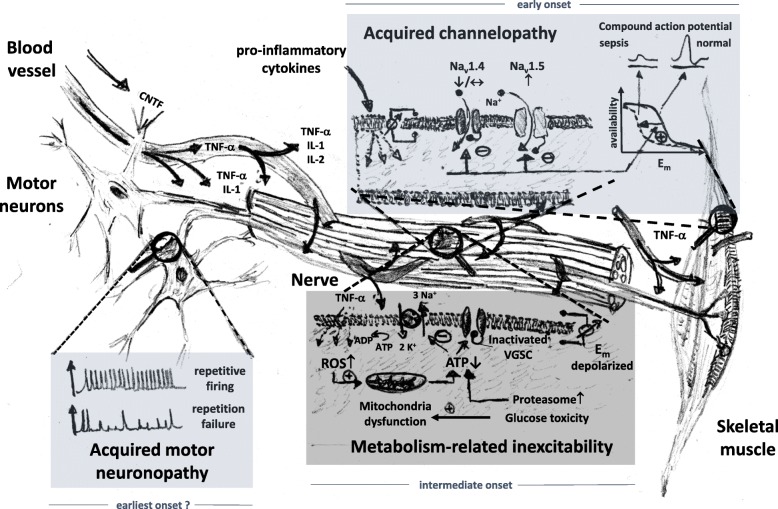Fig. 1.
Mechanisms leading to neuromuscular inexcitability during early to intermediate phases of sepsis and critical illness. The very early phases of systemic inflammation are reflected by motor neuron repetitive firing failure followed by development of an acquired channelopathy of voltage-gated Na+-channels (VGSC) in peripheral nerves and muscles. In the course of critical illness, metabolism-related inexcitability adds another level through ATP depletion. At later stage, structural changes prevail (not shown). Reversibility declines with each added layer of mechanism. PKC, protein kinase C; CNTF, ciliary neurotrophic factor; ROS, reactive oxygen species

